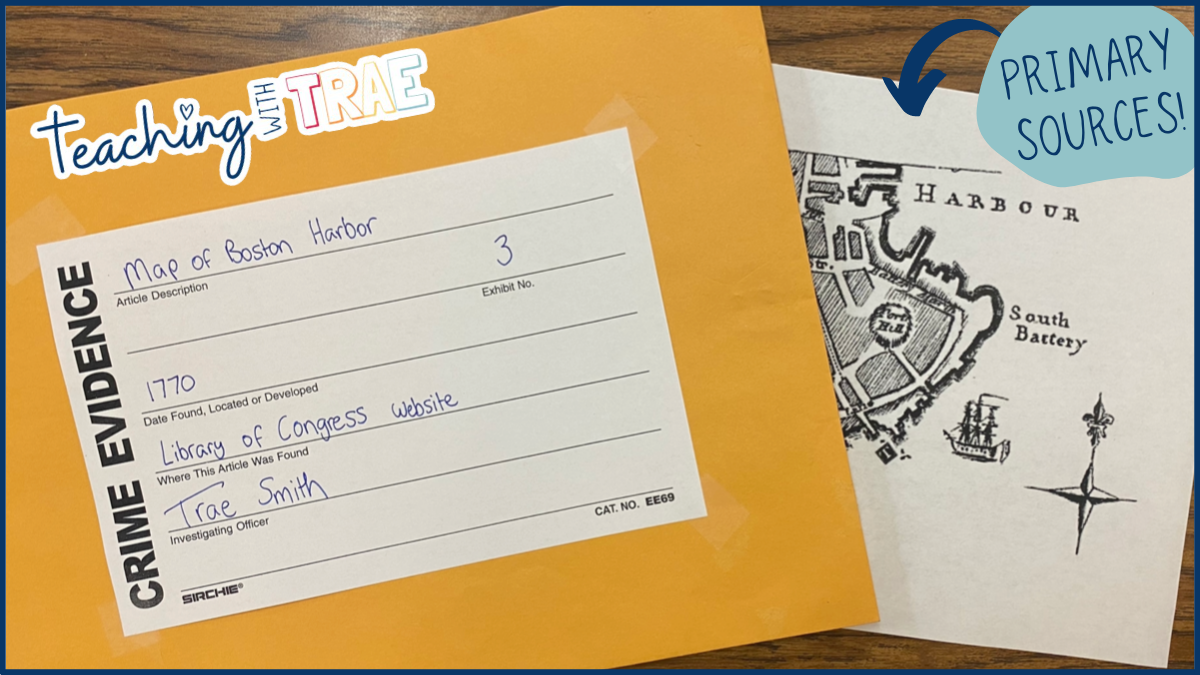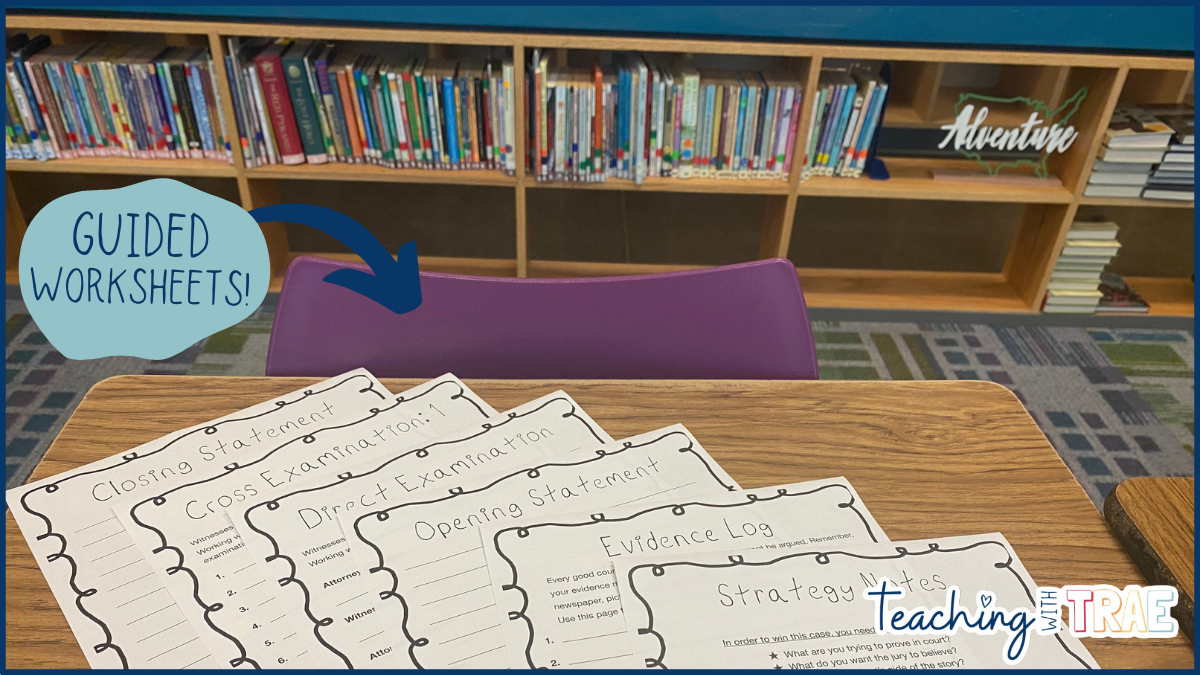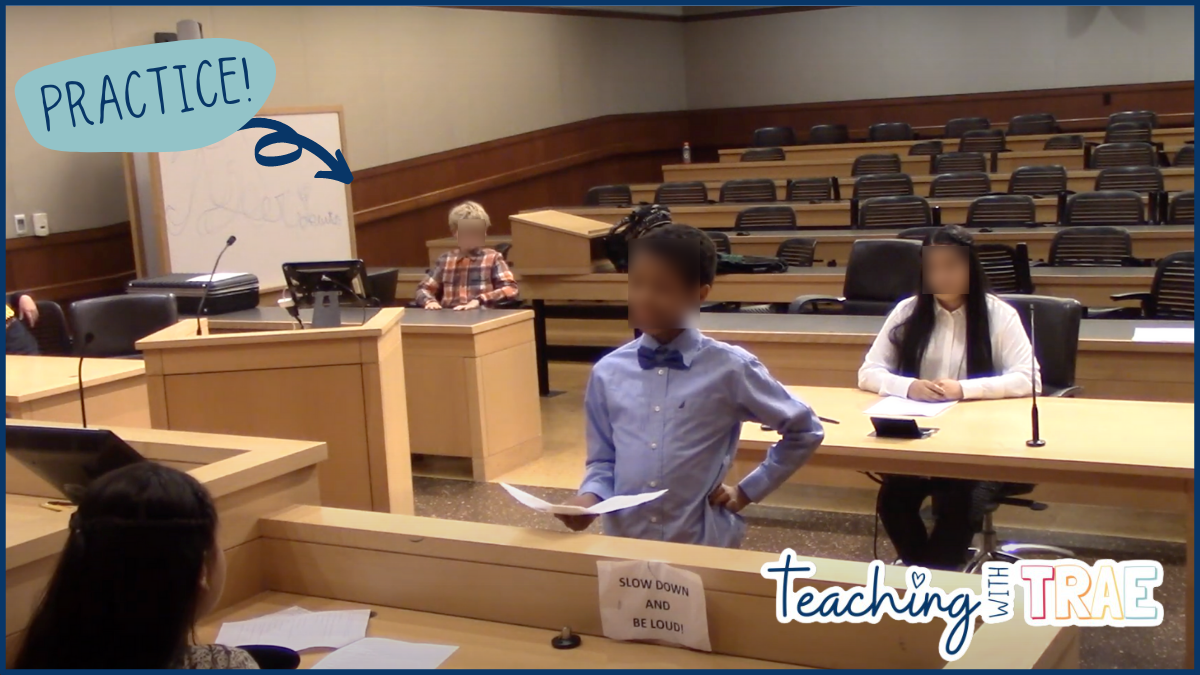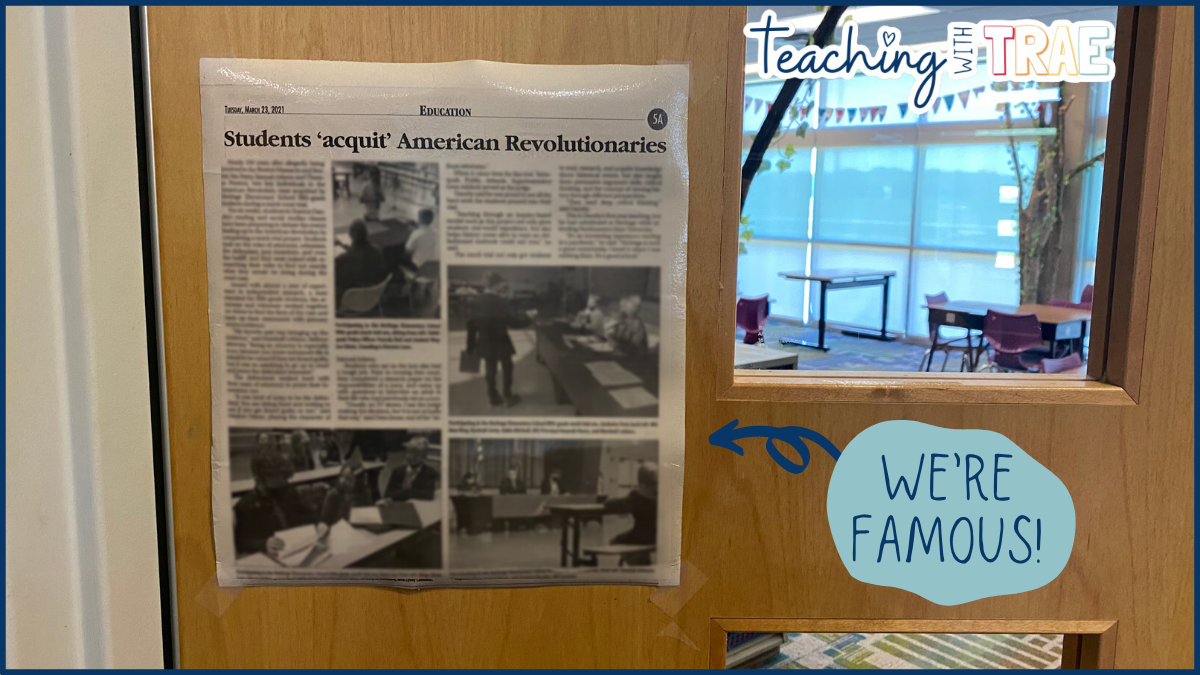Bringing the American Revolution Alive with Project Based Learning in Upper Elementary
If you teach the American Revolution or anything to do with civics and the judicial system, I have the PERFECT project for you to do!
Bringing history to life is SO important and makes class so much more fun! American history is full of drama, legends, and unsolved tales, the perfect formula for a court trial.
In my state, I'm responsible for not only teaching the American Revolution, but also civics/jury duty, speaking/listening skills, primary sources, and basic research. If you're anything like me, class time is limited and valuable, so this project could not have been any better!

Cue the mock trial project - an interactive and fun cumulative project where our studies came to life as students learned firsthand how a court system works and uncovered some deep mysteries about the Boston Massacre and Boston Tea Party!
One thing I loved about this project was how it is naturally differentiated so that ALL of your students will be engaged. Seriously, even my ornery kids were HIGHLY ENGAGED in this project.
Let me tell you, the connections that my students drew from their internal curiosity and inquiry blew me away. In preparing their case, one student attorney found a journal that contained Samuel Adam's home address and compared this address to the address of the Boston Harbor to argue that Adams was too far away to be involved because of the distance- WOW. This came from the brain of a 5th grader! I'm telling you, the connections and depth of knowledge that your students will take away is nothing short of a teacher's dream.

As a result of doing this project in my classroom, I've had the joy of seeing my students fall in love with history, I've had parents thank me for inspiring their kids to dream big, district admin tell me how cool the project turned out, and even our local newspaper feature a story on the project - how cool is it that my students actually BECAME part of a primary source?!
So how exactly does all of this work? Keep reading as I break down what I did week by week to launch this project. Implementing the mock trial, or any project-based learning, is a ton of work whenever you're on your own, so I'm glad to be a resource to help you recreate this unforgettable experience. I've also compiled EVERYTHING you'll need in one easy-to-print packet on my TPT store, which you can find here.
Week 1 - Introduction
The first thing I do is introduce the basic components of a court case and explain the purpose of the judicial system.
I show my students a couple of (preapproved) Youtube videos of clips from real-life court cases. We discuss how the judge does not decide the case but is more of a referee to make sure a fair trial happens. We talk about the role of the jury, and how random citizens from all walks of life are given the power to decide the outcome.
This is also a great opportunity to introduce some key academic vocabulary about the courtroom. Words like an oath, prosecution, speculation, jury, etc are good to review before getting into the thick of the project.
Next, I connect the judicial system to the two events in history which we have previously discussed - the Boston Tea Party and Boston Massacre. You can also use any other historical events that align with your standards, but these fit perfectly for me.
I explain to the students how we will be bringing these historical events to life through a mock trial where they will be responsible for deciding the outcome. I explain the different people/roles in a courtroom such a the judge, jury, bailiff, defense attorneys, prosecuting attorneys, witnesses, and the defendant.
I ask students to rank these roles from most interesting to least interesting. I explain that I'll take what they say into account, but I have the final say in determining who does what role. I've found that my gifted kids do well as attorneys and my students who are intimidated by being “center of attention” do well as jury members. I go have more in-depth explanations with advice in my resource on TPT.
Most of this week is comprised of making anchor charts, covering key vocabulary, discussing basic components of a courtroom, and learning the fundamentals that they will use in the coming weeks.

Week 2 - Beginning Research
This is the week I announce the roles the students will be taking on for the project. I really hype this up with drumrolls and confetti to get students excited about finding what role they will serve.
After everyone discovers their roles, we dive into the beginning stages of research on the Boston Tea Party and Boston Massacre. Be sure you've taught students how to research and find information online before diving in too deep! I also check out a ton of books from my school library and local library about these topics.
During this week, I have my defense team and prosecuting team meet briefly to discuss strategy, create characters for the trial, and talk about how they want to win the case. The prosecuting team consists of the prosecuting attorneys, witnesses, and the prosecutor. The defense team consists of the defense attorneys, witnesses, and defendants.
Since my jury members and bailiff will not have a job related to the case until Court Day, I have them identify an adult in their life who has been a police officer or jury member to interview and find out information about court cases. I always keep a list of both of these “types” of citizens on hand just in case, too.

Week 3 - Continuing Research
Now that some of the prep work has gotten off to a good start, we really dive into the nitty-gritty of the case during this week. My defense team and the prosecuting team begin to work on drafting their opening statements and writing their fictional alibi. (What a perfect way to incorporate writing skills!!)
The jury members and bailiff also begin to complete a guided online research worksheet to identify their roles in a courtroom as they prepare to get ready for Court Day. I stress having students cite the source of their findings.
If you're wondering how in the world to do all of this in one week, everything is explained clearly here with pictures and advice to make your life easier. You can easily implement this project without any experience or knowledge of legal jargon, I PROMISE! I've done all of the heavy liftings for you. ☺️

Week 4 - Practicing Perfection
At the beginning of the week, my attorneys finish their opening statement and begin working in their teams to develop their line of questioning for direct examination. All of the other students work to finish their missing pieces as well.
At the end of the week, we begin our first rehearsal. This is a good time for them to practice following courtroom rules (hello speaking and listening skills!!) and gets the jitters out. We discuss the flow of a court trial and practice where to stand, walk, and sit during the actual court day. I serve as the judge during rehearsal. At the end of the rehearsal, I have my attorneys reflect on which parts of their speech worked and which parts sounded awkward. Reflection is so important in project-based learning!
Week 5 - Interviewing and Wrapping Up
During this week, all of the important research should be done. The defense/prosecuting team should be finishing up their direct examination and cross-examination questions, and their witnesses should begin to have their responses memorized to their attorney's questions.
This is also the week where I have my jury members and bailiff interview their adults with the interview questions they developed themselves.

At the end of the week, we have our second rehearsal. I encourage my students to rely less and less on their scripts during this practice. During this practice, I am strict with courtroom rules and encourage my students to object whenever someone breaks a courtroom rule. This allows them to get out the bad questions and once again helps improve listening skills while the opposing team looks for ways to catch their opponent messing up.. while remaining in a low-risk environment.
Week 6 - Prepping for the Big Day!
It's the last week (you can make the project go faster or take longer, depending on what works for you) and the court is about to be in session!
During this week, I remind students how important it is to finalize everything they have been working on. Everything should be wrapping up and excitement will build as the anticipation for the big Court Day builds!
As for myself, I begin to gather the supplies and props that we will need for the big day. This is not only a great opportunity to involve your community, but allows you to get really cool accessories for NO COST. If you want to know exactly what supplies I got for my courtroom and how I got them for free, I have an exclusive freebie I'd love to send you. Cha-ching, who doesn't love free things?!

Court is in Session!
The time has finally rolled around for the big day - Court Day! This is a perfect opportunity to invite school and district administration into your classroom to see the hard work your students have poured into their project. They will be AMAZED at the cross-curricular skills that your students have developed through this project!
If you're anything like me and want to go the extra mile, invite your local newspaper over to cover a story on the project. During my first year doing this project, our local newspaper ran a story, and let me tell you - the excitement my students had about becoming part of a REAL primary source was music to my teacher ears. After the story launched, we even had a community member call the editor and leave a wonderful message.
What an impressive display of educational innovation! I suspect there are many such stories in public schools across the rest of the nation, but the one reported on in today's edition of the paper was so magnificent it deserves comment. My brother was on the debate team in high school so, when I first looked at the pictures, I thought I was looking at high school students, especially given the headline. On closer inspection of the picture I could tell it was a younger group, but fifth grade? I was frankly blown away at the creative combination of history, civics, language skills, and speech. All separate classes when I was in school and I suspect never came close to this when I was in the fifth grade. This type of classroom activity gives me hope for the future! Kudos to the kids, educators, and parents who supported this activity. Well done!!

Guests aside, sit down and enjoy the show as your students make history and the American judicial system come alive. People will be shocked at how very little you actually did during this project but how rich of knowledge your students will take away. Without a doubt, Court Day is one of my favorite days of each school year.

